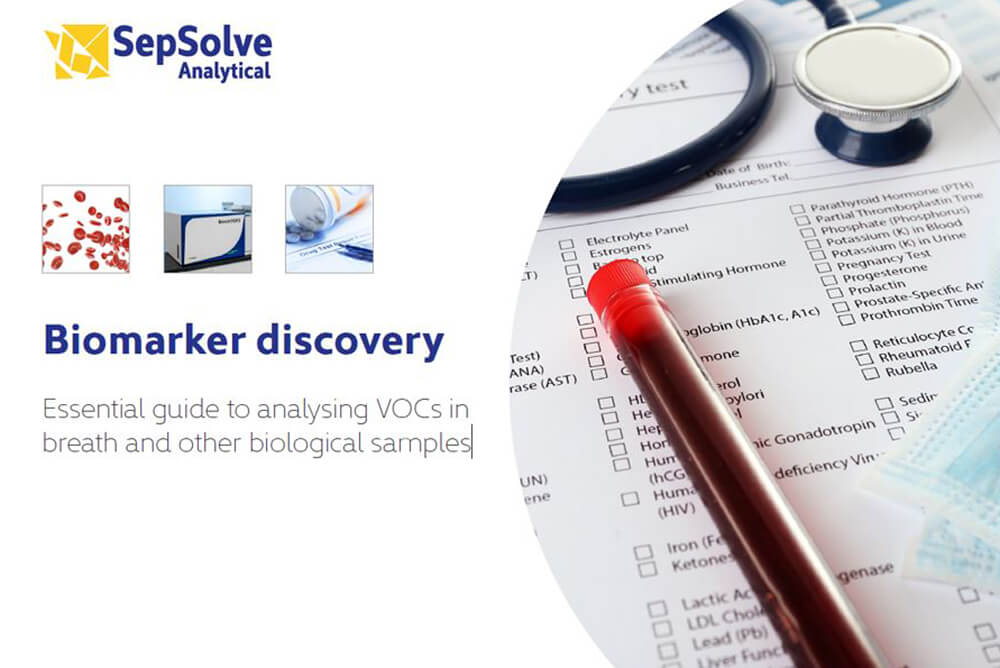The accurate identification and measurement of biomarkers in biological samples – such as breath and biofluids – has the potential to provide rapid, minimally-invasive diagnosis of a range of physiological and pathological conditions.
In this Applications Guide, we describe how flexible sampling coupled with high-performance GC–MS or GC×GC–MS enables the maximum possible number of compounds to be identified in a realistic run time.
Volatile organic compounds (VOCs) emitted by the human body have great potential in disease diagnosis. This is largely due to the discovery of so-called ‘biomarkers’, which provide indicators of normal or abnormal states.
Such developments open up the possibility of breath analysis making the leap from research to clinical practice. This would allow the screening of large populations, improving patient survival and reducing costs for health services.
However, a successful transition from benchtop to bedside depends on a valid basis for reproducible and standardised VOC collection. This is where thermal desorption coupled with GC–MS plays an important role, for preconcentration, separation, and ultimately confident identification, of potential biomarkers.






